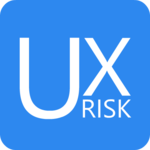Description

CyberGRX

Hyperproof
Comprehensive Overview: CyberGRX vs Hyperproof
CyberGRX and Hyperproof are both platforms designed to enhance and streamline aspects of cybersecurity and compliance, but they cater to distinct needs within the field. Here's a comprehensive overview of both:
CyberGRX
a) Primary Functions and Target Markets
- Primary Functions:
- CyberGRX is primarily a third-party cyber risk management platform. It provides tools for organizations to assess, monitor, and mitigate risks associated with third-party vendors and business partners.
- It offers a structured framework for conducting security assessments of vendors, enabling efficient risk analysis and continuous monitoring.
- The platform provides dynamic data analytics and benchmarking features, helping organizations compare vendor risk profiles against industry standards.
- Target Markets:
- CyberGRX targets businesses across a variety of industries that rely heavily on third-party vendors, such as finance, healthcare, and technology.
- It is particularly useful for large enterprises and organizations with complex vendor networks, where managing third-party risk is a significant concern.
b) Market Share and User Base
- CyberGRX has established a notable presence in the market for third-party risk management, with a vast exchange network that enables shared risk assessments among multiple clients.
- While exact market share statistics can be variable, CyberGRX is recognized as a key player in the niche market of third-party risk management solutions.
c) Key Differentiating Factors
- Exchange Model: One of the standout features of CyberGRX is its Exchange model, which allows multiple companies to access standardized risk data for common vendors, reducing redundant assessment efforts.
- Predictive and Advanced Analytics: CyberGRX employs advanced analytics to predict potential risk factors and to provide clients with actionable insights.
- Network Effect: The platform's large database and user network enhance the accuracy and reliability of risk assessments by leveraging shared intelligence across the customer base.
Hyperproof
a) Primary Functions and Target Markets
-
Primary Functions:
- Hyperproof focuses on compliance operations and management, helping organizations streamline their compliance workflows, track tasks, and manage evidence for audits and certifications.
- It provides a centralized platform for managing compliance requirements across various standards (e.g., ISO, SOC 2, GDPR).
- The platform automates evidence collection and compliance reporting, minimizing manual workloads.
-
Target Markets:
- Hyperproof is designed for organizations that have complex compliance requirements, such as those in regulated industries like finance, healthcare, and technology.
- It serves companies of various sizes that need to achieve and maintain compliance with multiple regulatory frameworks.
b) Market Share and User Base
- Hyperproof is recognized in the market for its focus on compliance management, offering a flexible and scalable solution suited for both small businesses and large enterprises.
- The user base includes companies that have to navigate complex regulatory landscapes and seek efficient compliance management solutions.
c) Key Differentiating Factors
- Integration and Automation: Hyperproof’s ability to integrate with existing IT systems and automate compliance processes is a significant advantage, reducing the time and effort required for audits.
- Flexibility and Usability: The platform is known for its user-friendly interface and flexibility in accommodating various compliance standards and frameworks.
- Centralized Evidence Management: Hyperproof offers a robust centralized evidence management system, which simplifies the process of gathering and organizing the documentation required for compliance.
Comparison and Conclusion
- While both CyberGRX and Hyperproof operate within the broader cybersecurity and compliance landscape, they serve different core functions: risk management for CyberGRX and compliance management for Hyperproof.
- In terms of market presence, CyberGRX's exchange model and network effect provide significant advantages in third-party risk management, whereas Hyperproof's ease of use and automation capabilities shine in the compliance domain.
- Organizations choosing between the two will likely base their decision on specific needs: managing third-party risks with CyberGRX or streamlining compliance operations with Hyperproof.
Contact Info

Year founded :
2015
+1 978-451-7655
Not Available
United States
http://www.linkedin.com/company/cybergrx

Year founded :
2018
+1 833-497-7663
Not Available
United States
http://www.linkedin.com/company/hyperproof
Feature Similarity Breakdown: CyberGRX, Hyperproof
As of my last update, both CyberGRX and Hyperproof are platforms that focus on risk management and compliance, albeit with some different focuses and features. Here's a breakdown based on their core functionalities and offerings:
a) Core Features in Common
-
Risk Assessment and Management:
- Both platforms offer tools to assess and manage risk, helping users identify potential vulnerabilities and manage compliance obligations.
-
Third-Party Risk Management:
- Both CyberGRX and Hyperproof provide processes and controls for managing third-party risk, which is crucial for modern business operations that rely on multiple vendors.
-
Automated Assessments:
- Automation is a key feature for standardizing and speeding up the risk assessment process, reducing the manual workload.
-
Integration Capabilities:
- Both solutions offer integration with other business tools and platforms to streamline workflows and centralize data.
-
Dashboard and Reporting:
- Each provides dashboards and reporting tools to help visualize risk data and track compliance status.
b) User Interface Comparison
-
CyberGRX:
- CyberGRX's user interface is designed to be intuitive, focusing on ease of use to ensure users can quickly access necessary information and insights. It emphasizes interactive dashboards and detailed analytics, which help users understand their risk landscape at a glance.
-
Hyperproof:
- Hyperproof prioritizes simplicity and user-friendliness in its design, allowing users to easily navigate through compliance processes and tasks. It also stresses real-time collaboration, which is reflected in its interface by facilitating team communication and task management directly within the platform.
c) Unique Features
-
CyberGRX:
- Exchange Membership: One unique aspect is CyberGRX's exchange model, where organizations can share assessment results with others in the community, promoting collaboration and transparency.
- Predictive Risk Profiles: It utilizes data analytics to predict potential risks, which helps organizations proactively manage vulnerabilities before they materialize.
-
Hyperproof:
- Continuous Compliance: Hyperproof offers features specifically aimed at continuous compliance, helping organizations stay audit-ready year-round rather than preparing reactively.
- Collaboration and Workflow Tools: Hyperproof has robust tools for collaboration that are built into their system, making it easier to delegate tasks and manage compliance workflows among team members.
Both platforms are powerful in their own right, but organizations might choose one over the other based on their specific needs for risk management, compliance, integration capabilities, or user experience preferences.
Features

Risk Assessment
Data Management
Compliance Monitoring
Collaboration Tools

Audit Management
Compliance Management
Risk Management
Team Collaboration
Best Fit Use Cases: CyberGRX, Hyperproof
a) CyberGRX
Best Fit Use Cases:
-
Third-Party Risk Management (TPRM): CyberGRX is specifically designed for businesses that need to manage third-party risks efficiently. It is suitable for organizations that heavily rely on a network of vendors, suppliers, or partners and need a robust system to assess, monitor, and mitigate risks emanating from these third parties.
-
Enterprises with Large Vendor Ecosystems: Large enterprises that interact with a substantial number of third parties can greatly benefit from CyberGRX. Its scalable platform supports businesses that need to manage risk across hundreds or thousands of vendors.
-
Industries with Strict Compliance Requirements: CyberGRX is valuable for industries where compliance with regulations like GDPR, HIPAA, or PCI DSS is critical. It helps automate and streamline compliance assessments and reporting processes.
-
Businesses Seeking Collaborative Risk Management: CyberGRX facilitates collaboration between organizations and their third parties by providing a shared platform for risk assessment and continuous monitoring, making it ideal for firms looking to improve their risk management efficacy through cooperation.
b) Hyperproof
Preferred Use Scenarios:
-
Organizations Focused on Compliance and Assurance: Hyperproof is ideal for businesses that need to manage compliance activities efficiently. It supports a wide range of frameworks and standards, including ISO 27001, SOC 2, and NIST, providing a central platform for compliance management.
-
Companies with Multiple Ongoing Audits: Businesses that undergo multiple audits throughout the year or have continuous compliance requirements would benefit from Hyperproof's capabilities to streamline audit preparation and evidence collection processes.
-
Remote Teams or Distributed Workforce: Hyperproof’s cloud-based nature and collaboration features make it an excellent choice for organizations with remote or distributed teams that need a unified platform to handle compliance tasks and workflows.
-
Growing Companies Needing Structured Compliance: Startups or mid-sized companies on a growth trajectory that require more structured compliance management to attract enterprise customers or meet regulatory demands can find Hyperproof beneficial.
d) Catering to Different Industry Verticals or Company Sizes:
CyberGRX:
- Industry Verticals: CyberGRX is well-suited for sectors such as finance, healthcare, manufacturing, and any industry with substantial third-party interactions. These sectors benefit from its dedicated focus on third-party risk management.
- Company Sizes: While larger enterprises are the primary beneficiaries due to extensive vendor networks, medium-sized companies seeking to enhance their third-party risk management practices can also leverage CyberGRX effectively.
Hyperproof:
- Industry Verticals: Hyperproof serves a broad range of verticals including technology, finance, healthcare, and others that require stringent compliance management. Its flexible framework support adapts to multiple industry needs.
- Company Sizes: Hyperproof is designed to be accessible to both small and large enterprises. Startups aiming to establish sound compliance practices and larger corporations needing to scale their compliance operations can both benefit from the platform.
Both CyberGRX and Hyperproof offer valuable features tailored to specific business needs and industry challenges. CyberGRX focuses on third-party risk management, making it ideal for businesses with extensive vendor interactions, while Hyperproof emphasizes compliance management, catering to organizations seeking a streamlined approach to compliance across various frameworks.
Pricing

Pricing Not Available

Pricing Not Available
Metrics History
Metrics History
Comparing teamSize across companies
Conclusion & Final Verdict: CyberGRX vs Hyperproof
To provide a clear conclusion and final verdict between CyberGRX and Hyperproof, it's essential to evaluate them based on their specific functionalities, target markets, and overall value.
a) Best Overall Value
CyberGRX and Hyperproof serve overlapping but distinct needs within the governance, risk, and compliance (GRC) realm.
- CyberGRX is particularly well-suited for organizations focusing on third-party cyber risk management. It offers a comprehensive database of third-party risk assessments that help organizations understand and mitigate associated cybersecurity risks.
- Hyperproof, on the other hand, is designed to simplify and streamline compliance management processes. It's suitable for enterprises that need to manage multiple compliance frameworks and maintain audit readiness effectively.
The best overall value depends on the organization's primary needs:
- For third-party risk management and cybersecurity posture assessments, CyberGRX offers more value.
- For comprehensive compliance management across various frameworks, Hyperproof provides significant value.
b) Pros and Cons
CyberGRX:
- Pros:
- Extensive third-party cyber risk assessments.
- Efficient sharing of risk data through its exchange platform.
- Helps save time and resources in evaluating vendors, inherits pre-completed assessments.
- Cons:
- May not cover broader compliance management needs if that’s a priority.
- Could be seen as pricey if only used for smaller vendor landscapes.
Hyperproof:
- Pros:
- Streamlines compliance management across multiple standards and frameworks.
- Provides tools for continuous audit readiness and policy management.
- User-friendly interface and automation features.
- Cons:
- Might require additional tools for in-depth third-party risk assessments.
- Setup and integration can be complex depending on existing systems.
c) Recommendations
For organizations trying to decide between CyberGRX and Hyperproof, consider the following:
- Define Your Priorities: If your main concern is managing risks associated with third-party vendors, CyberGRX is likely more beneficial. For broader compliance management needs, look towards Hyperproof.
- Integration with Current Systems: Assess how each tool will integrate with your existing technological ecosystem and which one offers a smoother transition.
- Scalability and Future Needs: Consider which platform is better suited to scale with your organization’s growth and evolving needs in cybersecurity and compliance.
- Trial Period and Demos: Utilize any free trials or demos offered to get a hands-on feel for each platform's interface and capabilities.
- Consult Peers or Industry Experts: Seek reviews or consult with peers who have used these tools within your industry as they can provide insights on practical usage and support efficacy.
Ultimately, the decision should align with your strategic objectives in risk management and compliance, ensuring that the tool chosen addresses your top priorities effectively.
Add to compare
Add similar companies



